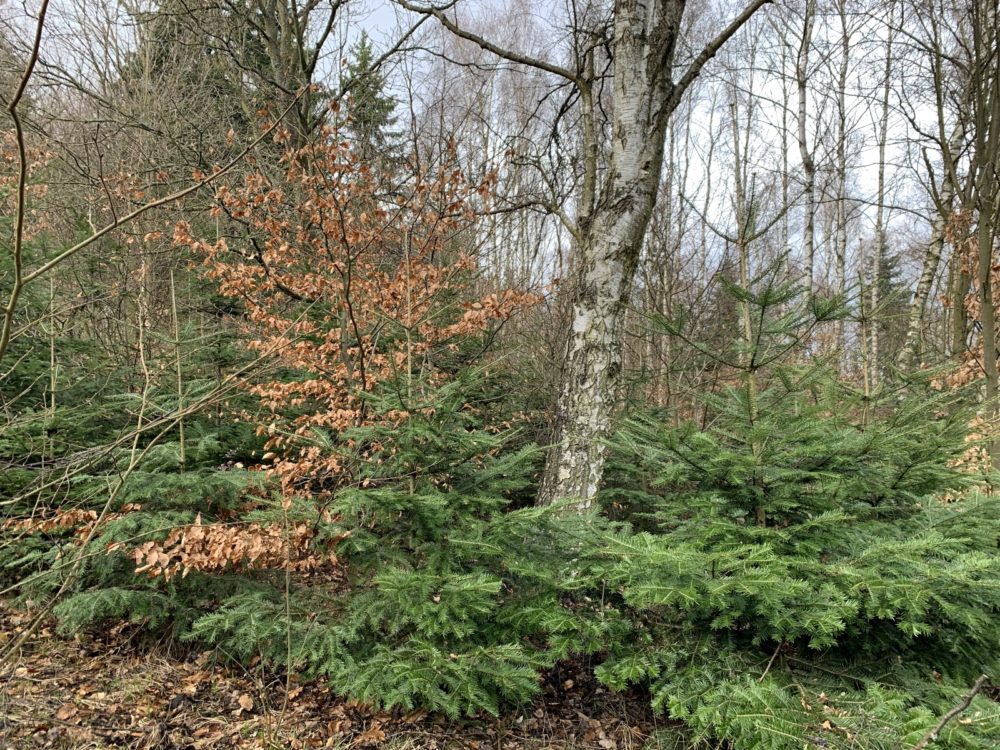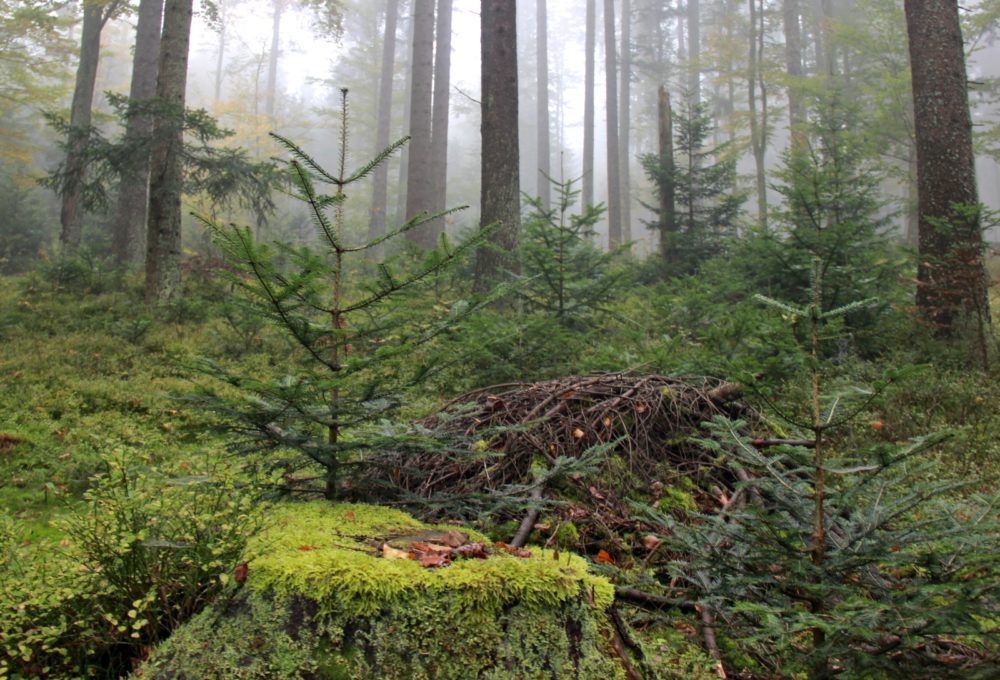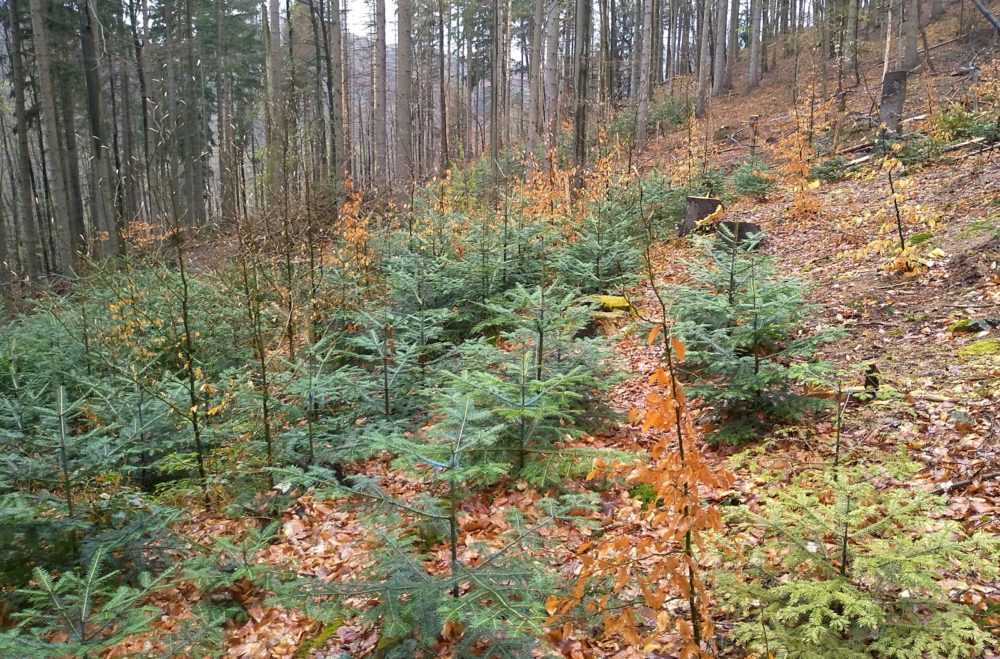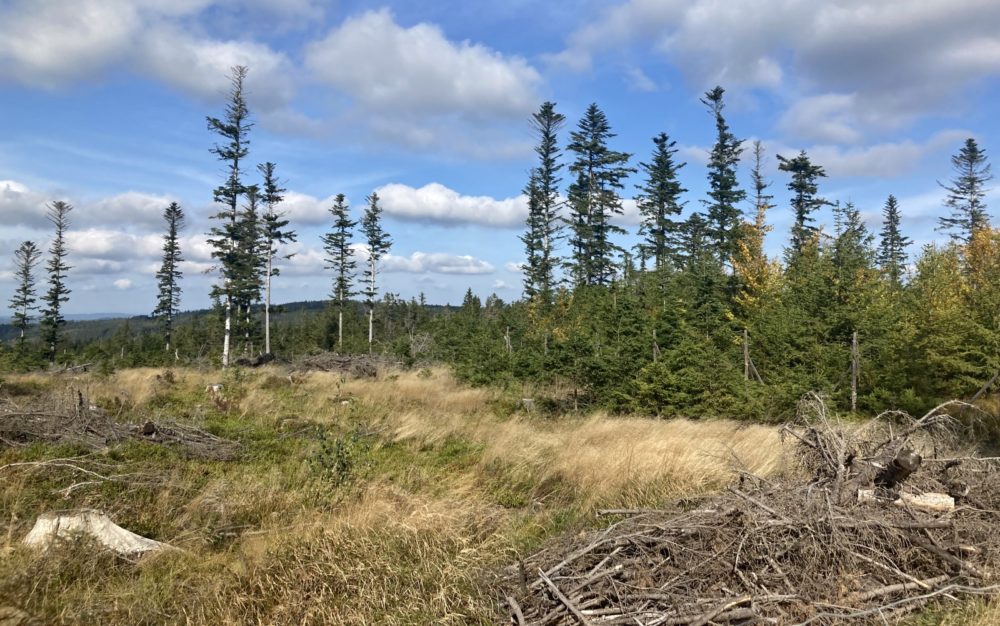How to successfully return silver fir back to our forests?
 The continuing global climate change and its significant impacts on forest ecosystems make it necessary to look for innovative approaches to sustainable forestry. Silver fir is one of the key tree species that can play a significant role in adapting forest stands to new climatic conditions.
The continuing global climate change and its significant impacts on forest ecosystems make it necessary to look for innovative approaches to sustainable forestry. Silver fir is one of the key tree species that can play a significant role in adapting forest stands to new climatic conditions.
Photo: Mixed forest stand with silver fir, archive of Research Station (VS) Opočno
The silver fir has significant historical and economic importance in Central Europe, despite its current representation in forest stands being only 1.3%, compared to its natural representation of 19.8%. This decrease is due to human impact, historical interventions in forest ecosystems, inadequate forestry management of different age classes of forests, and various natural factors.
Global climate change is affecting ecosystems around all the world, changing temperatures, precipitation, and plant growth conditions. In this context, it is necessary to apply new approaches to the creation of forest mixtures that will be better able to withstand extreme climatic events while preserving biological diversity. Silver fir may be a key element of these new trends.
Forestry practice already has experience with the creation of mixed stands with silver fir. In recent decades, however, there has been a lack of comprehensive methodological material, which would be based on the latest, exactly verified findings.
 Photo: Mixed forest stand with silver fir, archive of VS Opočno
Photo: Mixed forest stand with silver fir, archive of VS Opočno
For these reasons, scientists from VÚLHM, v. v. i. have developed for forestry practice two certified methodologies on silver fir: „Formation of mixed stands with silver fir“ and „Forest tending of stands with silver fir“ (Tvorba porostních směsí s jedlí bělokorou a Výchova porostů s jedlí bělokorou). Both methodologies were created during the solution of the project “Procedures for the support of silver fir in the forest management of the Czech Republic” („Postupy pro podporu jedle bělokoré v lesním hospodářství ČR“, NAZV QK1910292).
To increase the representation of silver fir in our forests, we need to concentrate on two main approaches. First, we should focus on the natural regeneration of mature stands, even if the fir is only scattered within them. Second, we should work on establishing new mixtures with fir through artificial regeneration. It may also be beneficial to combine both methods for optimal results.
However, for the success of regeneration and the achievement of the goal, i.e. increasing the proportion of silver fir in forest stands, it is currently essential to ensure a balance between the condition of ungulates and the condition of fir natural regeneration, young plantation, and young stands. Long-term experience from regions where such a balance has been established, i.e. fir grows practically without mechanical or chemical protection, confirms the correctness of such a procedure. If the condition of minimization of animal damage is not ensured, all efforts to increase the representation of fir in our forests are without a sense.
The silver fir was once the most widespread conifer in the original natural species composition. Its decline can be attributed to a variety of factors, including deteriorating health due to both climate change and human activities (emissions), as well as historical changes in forest management practices such as a preference for clear-cutting methods or undergrowth methods with a shorter regeneration period. Additionally, the increase in population density of domestic and introduced species of ungulates since the middle of the last century has also had a significant impact on the decline of the fir.
 Photo: Mixed forest stand with silver fir, archive of VS Opočno
Photo: Mixed forest stand with silver fir, archive of VS Opočno
To increase the proportion of silver fir in Czech forests, it is important to incorporate it into all forestry practices and consider planting it alongside replacement trees in areas where trees have been cleared due to calamities. The primary objective in areas where silver fir has completely disappeared is to ensure that they make up at least a small portion of the new stands with the help of artificial regeneration.
At present, when reintroducing silver fit to our forests, it is important to consider the effects of ongoing climate change and the diverse goals of forest management. As a result, the primary focus of the methodologies is on creating and educating about mixed forests that include silver fir. This approach takes into account current research findings as well as historical practical experience.
Increasing the presence of silver fir is a priority for forestry, as well as for other environmentally oriented social objectives. The gradual decline of fir in our forests in the past, for various reasons, has also led to a loss of historical knowledge on how to establish and care for these stands.
The presence of silver fir in stands serves multiple functions including improvement of the habitat, as well as providing strength and support. It is believed that increasing the proportion of fir in a given area will lead to better fulfilment of both productive and non-productive functions.
 Photo: The use of reserved trees of silver after processing the bark beetle in the originally predominantly spruce forest; the left individual trees suffer from the extremity of the open area, but their potential for recovery can be used especially in cases where the clear-cutted area is quickly invaded by pioneer trees (e.g. birch), under which fir regeneration can develop successfully; VS Opočno archive
Photo: The use of reserved trees of silver after processing the bark beetle in the originally predominantly spruce forest; the left individual trees suffer from the extremity of the open area, but their potential for recovery can be used especially in cases where the clear-cutted area is quickly invaded by pioneer trees (e.g. birch), under which fir regeneration can develop successfully; VS Opočno archive
The silver fir is currently a very underrepresented tree species in the Czech Republic, accounting for only 1.3% of the forest area, which is about 33,000 hectares. From 2000 to 2020, the area of fir stands increased by an average of 420 hectares per year. However, in recent years (2021-2022), this increase has doubled to approximately 840 hectares per year, largely due to a greater restoration of areas affected by catastrophic decay, mainly in spruce stands.
It is expected that this trend will continue, and the area of fir stands will increase by at least four thousand hectares over the next five years.
The silviculturing of silver fir is gaining interest, and it is becoming an important economic tree species. The area of young stands representing it is gradually increasing.
If the young stands develop in the shade of the mother (or underplanted) stand, this will help them achieve desirable height differentiation and reduce the demands for their tending.
The current approach to establishing fir stands artificially requires active tending interventions to promote stability, sufficiently long crowns, and maintain them as a mixture.
One significant benefit of these new procedures for creating mixed forests is the reduction of the risk that the destruction of stands will limit the performance of other forest functions.
Both methodologies can be downloaded here: Tvorba porostních směsí s jedlí bělokorou; Výchova porostů s jedlí bělokorou
Authors of methodologies: Ing. Jiří Novák, Ph.D., Ing. David Dušek, Ph.D., Ing. Ondřej Špulák, Ph.D., Ing. Jan Bartoš, Ph.D., Ing. Jiří Souček, Ph.D., Ing. Jakub Černý, Ph.D., Ing. Dušan Kacálek, Ph.D., Ing. Jan Leugner, Ph.D.; FGMRI (VÚLHM, v. v. i.), Research Station (Výzkumná stanice) Opočno; e-mail: novak@vulhmop.cz
Prepared by: Ing. Jan Řezáč, VÚLHM, v. v. i., e-mail: rezac@vulhm.cz
